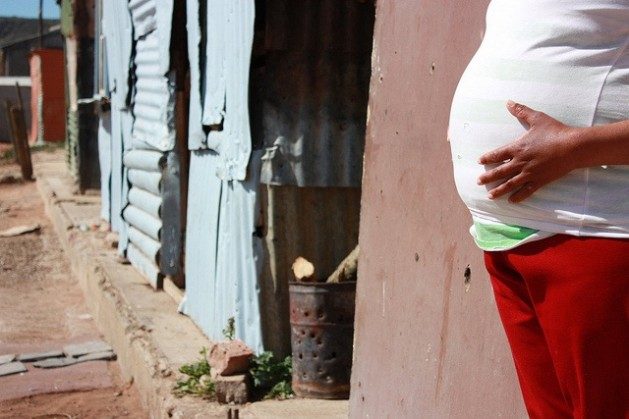EXPLAINER — Maternal Mortality: Why Has Progress In Saving Women’s Lives Stalled?

KATHMANDU, May 10 (IPS) - A new report reveals that from 2000 to 2015, the global maternal mortality ratio (MMR) fell by 33%, and by more than 50% in 58 countries that had the highest rates of women dying during pregnancy or up to 42 days after delivery. But from 2016 to 2020, maternal mortality barely changed. In 2020, roughly 287,000 women globally died from a maternal cause, which is almost 800 maternal deaths daily, and about one every two minutes.
The report, Trends in maternal mortality 2000 to 2020: estimates, by United Nations (UN) agencies and the World Bank Group, predicted that if current trends continue more than one million extra maternal deaths will occur by 2030, the end of the global Sustainable Development Goals (SDGs).
What are the SDGs?
The 17 SDGs were adopted by all UN member states In 2015 after the Millennium Development Goals (2000-2015) ended. Each SDG deals with a specific development issue, such as poverty, education and health. And every goal includes specific targets, all of which are supposed to be met by 2030.
What is the SDGs target for maternal mortality?
The SDG target (3.1) for maternal mortality is a global MMR of less than 70 for every 100,000 live births. A supplementary target is that by 2030, no country should have an MMR greater than 140.
Is the world on track to meet the target?
The global MMR in 2020 was estimated at 223, down from 227 in 2015 and from 339 in 2000 – a drop of one-third (34.3%) from 2000 to 2020 but far from the target of 70. If the pace of progress seen in 2016–2020 continues, the MMR will be 222 by 2030 – over three times the target.
Why is the world so far off-track?
The vast majority of maternal deaths are preventable: the clinical knowledge and technology needed to prevent them have long existed. But, such solutions are often not available, not accessible or not put in place, says the report. This is especially true in locations lacking resources and/or among populations that are at greater risk because of so-called ‘social determinants’ — for instance, their economic and education levels and distance from health services.
Where are the biggest challenges?
In 2020, sub-Saharan Africa was the only region with an MMR that the report labels ‘very high’ (500-999) — 545 maternal deaths per 100 000 live births. A 15-year-old girl in the region had a 1 in 40 lifetime risk of dying from a maternal cause. Sub-Saharan Africa alone accounted for roughly 70% of global maternal deaths in 2020, followed by Central and Southern Asia (17%).
Are any countries or regions doing well?
Between 2000 and 2020, Central and Southern Asia achieved the greatest percentage drop in MMR, with a decline of 67.5%, falling from 397 to 129 maternal deaths per 100 000 live births. In 2020, MMR was lowest in Australia and New Zealand. A 15-year-old girl there had a 1 in 16,000 lifetime risk of dying from a maternal cause.
Are there any outliers?
In the United States the MMR soared between 2018 and 2021, from 17.4 per 100,000 live births to 32.9, according to the US Centers for Disease Control and Prevention. During the same period, the MMR for the Black population went from 37.3 to 69.9. For the White population it started at 14.9 in 2018 and rose to 26.6 in 2021.
Many experts point to impacts of COVID-19 as a main cause of the spike, and an article by CNN also notes that the MMR has been steadily rising in the US for three decades.
In 2021 the US Government introduced policies to address the negative trend, including the Black Maternal “Momnibus” Act of 2021. That package of bills aims to provide pre- and post-natal support for Black mothers, including extending eligibility for certain benefits postpartum, adds the CNN article.
Did the COVID-19 pandemic have an impact?
“It is plausible” that the pandemic had an impact on maternal mortality, says the UN/World Bank report, while noting that stagnation in progress started before 2020, when COVID-19 spread globally. Studies in four countries have found excess maternal mortality due to the pandemic but research is scarce.
What needs to change to meet the 2030 target?
The report says multisectoral action is needed to meet various challenges to reducing maternal mortality, including:
- Strengthen health systems by: increasing numbers of well-trained and supervised staff; tackling shortages of essential supplies and making them accountable to ensuring the rights of women and girls;
- Focus on improving access to women and girls marginalized by social determinants, including: ethnicity, age, disability and socioeconomic inequalities, which impede women’s access to and use of sexual and reproductive health services;
- Achieve universal health coverage so that services are affordable;
- A perspective that embraces women’s equality and human rights must animate action;
- Health systems must be made more resilient to climate and humanitarian crises.
What are other benefits of cutting maternal mortality
“A woman’s health lays the foundation for her children’s health, her family, her community and for generations to come,” says the World Economic Forum. Gender equality globally would raise the world’s gross domestic product as much as US$28 billion, it adds.
© Inter Press Service (2023) — All Rights Reserved. Original source: Inter Press Service
 Global Issues
Global Issues